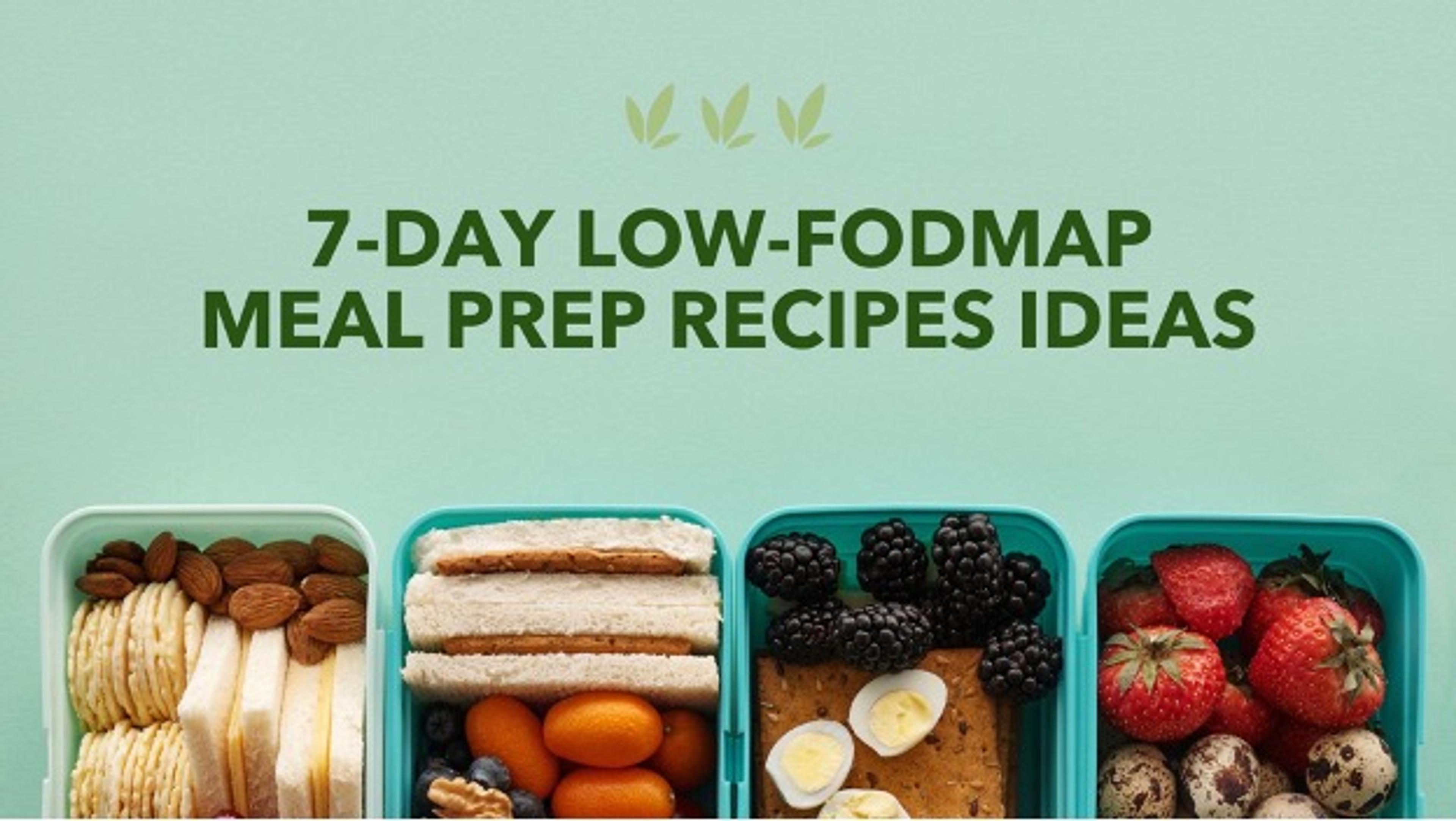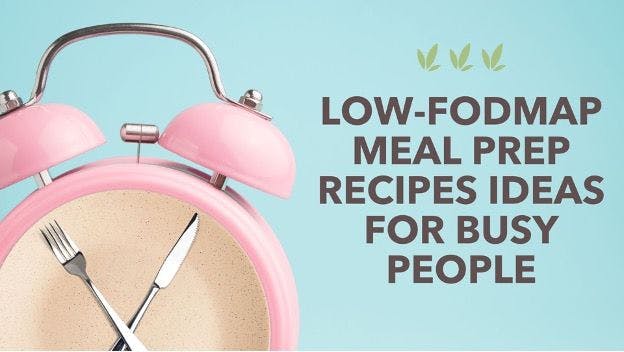By making a meal plan, you can save time, money, and yourself from having to order high-FODMAP takeaways at the last minute. The majority of the purchasing, cooking, and cleaning can be done at once when preparing many evening dinners, giving you more time to relax.
A low-FODMAP diet can be ideal if you have Irritable Bowel Syndrome (IBS) or experience painful gastrointestinal symptoms after consuming particular carbs. Planning and having a balanced meal plan can be beneficial to make sure you are consuming the correct foods for your digestive health, especially when the weekdays get busy.
Planning can help you stay on the low-FODMAP diet and ensure that you never go without a satisfying low-FODMAP meal.
What is a low-FODMAP diet?
A group of researchers at Monash University were credited with developing a low-FODMAP diet. The organization was the first to demonstrate that low-FODMAP diets reduce IBS symptoms. Monash University FODMAP consistently updates its low-FODMAP diet meals for healthy dietary content.
FODMAP stands for Fermentable Oligosaccharides, Disaccharides, Monosaccharides, and Polyols, a group of carbohydrates that are more challenging for people to digest. A low-FODMAP diet temporarily eliminates carbohydrates to alleviate painful sensations and give your digestive system a break.
Stages on Low-FODMAP Diet Plan
There are three diet stages that Monash University FODMAP recommends for working on relieving your gut through your dietary intake. Thisincludes;
Elimination Stage
During this stage, stay away from foods containing high FODMAP foods, including some particular fruits such as blackberries and watermelon—also vegetables, cereals, and dairy products.
The diet’s elimination stage could appear to be highly constrained at first. You can still make a good selection from a low-FODMAP food list. You would not go hungry while on a diet, but it does require some mental fortitude to adhere to it.
Reintroduction Stage
It takes about two to four weeks to begin the reintroduction stage after the elimination stage. Here, you gradually bring meals back in.
Maintenance Stage
In this third stage, you sort out which works for you and which does not work for you. Keep and maintain the diet plan that works best for you.
7-Day Low-FODMAP Meal Prep Recipes Ideas

This meal recipe for a low-FODMAP diet is suitable for those with IBS; it could also serve as your diet plan. You might have a preference for extra calories in your daily intake; consider working with your dietician to know what works best.
Each day consists of three meals and three snacks that are balanced with carbs, fats, and proteins. It includes foods high in fiber, vitamins, minerals, and antioxidants. The meal plan follows Monash University FODMAP guidelines; you can use a Monash University fodmap app for an easy guide.
You will find these seven days’ worth of recipe ideas helpful:
Day 1
Breakfast:
1 slice of sourdough bread
half avocado, and 1 fried egg
Snack:
10 almonds and 1 orange
Lunch:
On an 8-inch gluten-free wrap, a chicken Caesar salad covered with 3 ounces of roasted chicken breast
half a cup of shredded romaine lettuce
1 tablespoon of parmesan cheese and 2 tablespoons of low-FODMAP Caesar salad dressing
Snack:
½ cup baby carrots
¼cup garlic-free hummus
Dinner:
4-ounce turkey burger ( ground turkey; when buying a pre-prepared turkey burger, buy low-FODMAP-friendly ingredients)
1 zucchini, sliced in spears and roasted with 1 tbsp olive oil
Bake 1 ordinary potato.
Snack:
1 cup lactose-free ice cream
Day 2
Breakfast:
1 cup of yogurt without lactose
14 cups of granola without gluten
50 g of blueberries
Snack:
Two rice cakes and a spoonful of peanut butter
Lunch:
3 oz tuna combined with 1/4 avocado on two slices of bread without gluten,
and a portion of tomato
Snack:
1 oz cheddar cheese
half a cup of grapes
Dinner:
3 oz grilled salmon
1 cup of gluten-free pasta combined with half a cup of low-FODMAP tomato sauce (no onions or garlic)
In 1 cup of sauteed spinach, add 1 tablespoon of olive oil
Snack:
2 chocolate chip cookies without gluten
Day 3
Breakfast:
1 slice of bread without gluten
2 tablespoons of peanut butter
1 banana
Snack:
1 cup of yogurt without lactose
half a cup of raspberries
Lunch:
Veggie frittata baked with 3 eggs
half a medium-sized sweet potato
½ grated zucchini and 2 tablespoons of parmesan cheese
Snack:
12 corn of tortilla chips
¼ cup of guacamole without onion
Dinner:
4 oz of grilled salmon
1 cup of cooked brown rice
half a cup of roasted broccoli with 1 tablespoon of olive oil
Snack:
1 oz (70 percent) of dark chocolate
1 cup of plain popcorn
Day 4
Breakfast:
cook a half cup of oatmeal in water
1 tablespoon of peanut butter
half a cup of blueberries
Snack:
cube ofcantaloupe (1 cup)
10 almonds
Lunch:
4 oz slices of turkey
half avocado
half a cup of spinach
two slices of tomato in an 8-inch wrap without gluten
Snack:
10 2-inch long pretzel twists (free of gluten)
¼ cup hummus without garlic
Dinner:
4 oz of tofu cubes
half a cup of broccoli
half of the chops of red bell pepper
Stir and fry in 1 tablespoon of olive oil
2 tablespoons of teriyaki sauce with no garlic
1 cup of rice noodles
Snack:
5 big-sized strawberries
2 tablespoons of almond butter
Day 5
Breakfast:
1 slice of sourdough bread
half avocado
1 fried egg
Snack:
10 walnuts
¼ cup of dried cranberries
Lunch:
¼cup of hummus wrap without garlic mixed with hummus wrap,
lettuce, tomatoes, cucumber, ¼cup of olives,
and¼cup of feta cheese on an 8-inch wrap without gluten.
Snack:
Two cups of plain popcorn with salt.
Dinner:
3 oz grilled steak
1 cooked cup of brown rice
Cut 1 zucchini into slices and roast in a tablespoon of olive oil
Snack:
¼ cup chips of dark chocolate
Day 6
Breakfast:
4 inches of bagel with no gluten
2 tablespoons of cream cheese
1 oz salmon (smoked)
Snack:
1 small-sized banana
1 tablespoon of peanut butter
Lunch:
2 slices of bread with no gluten
½ avocado
Two eggs (poached)
Snack:
½cup of newly sprang outcarrots
¼ cup hummus with no garlic
Dinner:
1½ cups rice pasta with ½cup tomato sauce( with no garlic or onion)
1 cup of cubes of eggplant sauteed in 1 tablespoon olive oil
add2 tablespoons of parmesan cheese
Snack:
1 cup of ice cream without lactose
Day 7
Breakfast:
¾cup of yogurt (coconut)
¼ cup of granola without gluten
½cup of blueberries
Snack:
two rice cakes
2 tbsp almond butter
Lunch:
4 oz slices of turkey
1 tbsp of whole grain mustard, 1 slice of tomato, and a leaf of lettuce
2 slices of bread with no gluten
10 newly sprung carrots.
Snack:
1 medium-sized tangerine
5 walnuts
Dinner:
4 oz of salmon (grilled)
1 cup of cooked quinoa
Half cup of green beans (steamed)
Snack:
2 oz of 70% dark chocolate
½cup of raspberries
Take Away
Using the food guide and recipe from the Monash university fodmap app helps you stay on track, regardless of your nutritional objectives. Planning and preparation don’t have to take much time or be difficult.
Knowing what to cook and prepare from the meal recipe saves you a lot of time trying to figure it out. Also, by preparing meals in advance, meal prep allows you to save time during the workweek.
Having a meal plan recipe allows you to buy in bulk and stock up on your groceries. This is especially helpful for busy people, as you have what you need handy and can quickly prepare healthy low-FODMAP meals.
You can quickly create meals that are healthy for your digestive system using the FODMAP meal prep recipe. And reduce symptoms like bloating, gas, and stomach pains.


Comments are closed.